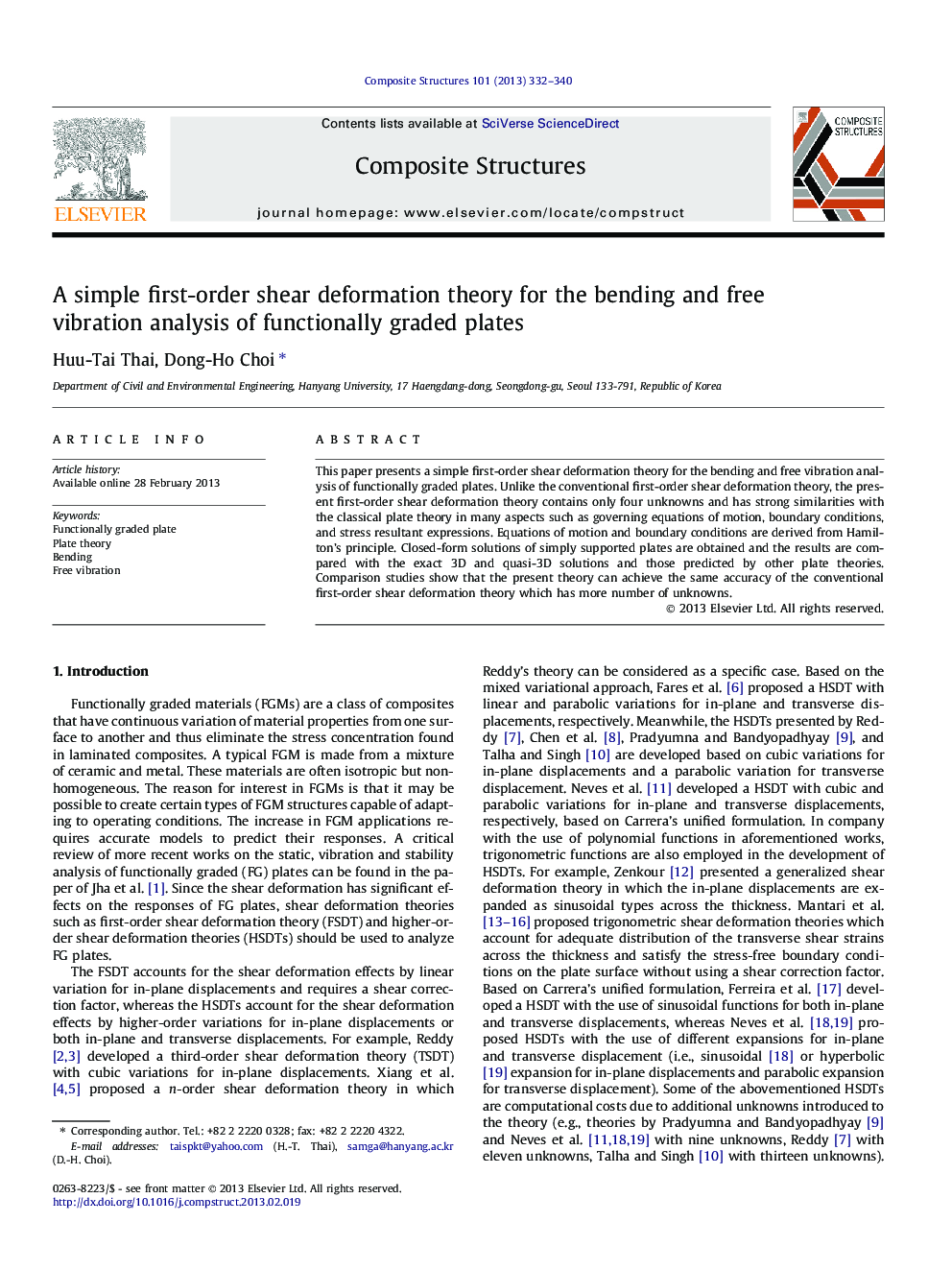| Article ID | Journal | Published Year | Pages | File Type |
|---|---|---|---|---|
| 252084 | Composite Structures | 2013 | 9 Pages |
This paper presents a simple first-order shear deformation theory for the bending and free vibration analysis of functionally graded plates. Unlike the conventional first-order shear deformation theory, the present first-order shear deformation theory contains only four unknowns and has strong similarities with the classical plate theory in many aspects such as governing equations of motion, boundary conditions, and stress resultant expressions. Equations of motion and boundary conditions are derived from Hamilton’s principle. Closed-form solutions of simply supported plates are obtained and the results are compared with the exact 3D and quasi-3D solutions and those predicted by other plate theories. Comparison studies show that the present theory can achieve the same accuracy of the conventional first-order shear deformation theory which has more number of unknowns.
